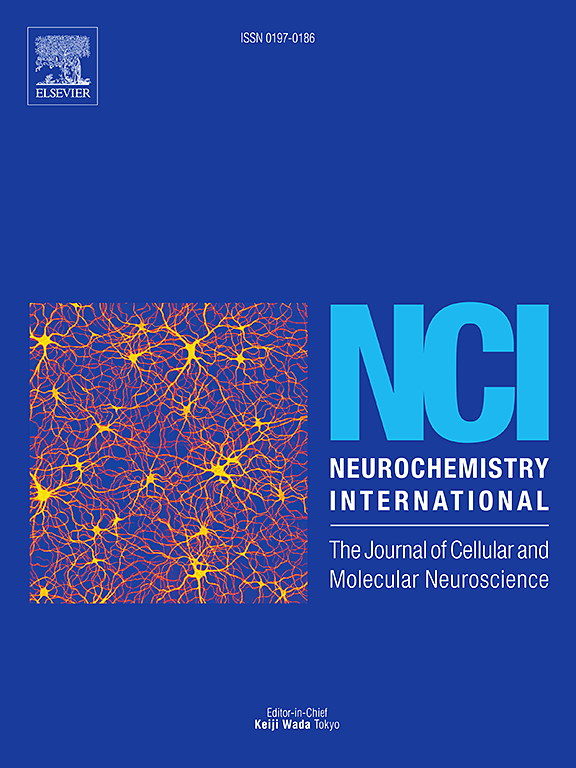Leptin deficiency leads to nerve degeneration and impairs axon remyelination by inducing Schwann cell apoptosis and demyelination in type 2 diabetic peripheral neuropathy in rats
IF 4.4
3区 医学
Q2 BIOCHEMISTRY & MOLECULAR BIOLOGY
引用次数: 0
Abstract
Diabetic peripheral neuropathy, characterized by symptoms such as paresthesia, neuropathic pain, and potential lower limb amputation, poses significant clinical management challenges. Recent studies suggest that chronic hyperglycemia-induced Schwann cells (SCs) apoptosis contributes to neurodegeneration and impaired nerve regeneration, but the detailed mechanisms are still unknown. Our study investigated a mixed-sex type 2 diabetes mellitus (T2DM) rat model using leptin knockout (KO) to simulate obesity and diabetes-related conditions. Through extensive assessments, including mechanical allodynia, electrophysiology, and microcirculation analyses, along with myelin degradation studies in KO versus wild-type rats, we focused on apoptosis, autophagy, and SCs dedifferentiation in the sciatic nerve and examined nerve regeneration in KO rats. KO rats exhibited notable reductions in mechanical withdrawal force, prolonged latency, decreased compound muscle action potential (CMAP) amplitude, reduced microcirculation, myelin sheath damage, and increases in apoptosis, autophagy, and SCs dedifferentiation. Moreover, leptin KO was found to impair peripheral nerve regeneration postinjury, as indicated by reduced muscle weight, lower CMAP amplitude, extended latency, and decreased remyelination and SCs density. These findings underscore the effectiveness of the T2DM rat model in clarifying the impact of leptin KO on SCs apoptosis, dedifferentiation, and demyelination, providing valuable insights into new therapeutic avenues for treating T2DM-induced peripheral neuropathy.
瘦素缺乏导致2型糖尿病周围神经病变大鼠神经退行性变,并通过诱导雪旺细胞凋亡和脱髓鞘损害轴突再生
糖尿病周围神经病变以感觉异常、神经性疼痛和潜在的下肢截肢等症状为特征,给临床管理带来了重大挑战。最近的研究表明,慢性高血糖诱导的雪旺细胞(SCs)凋亡有助于神经退行性变和神经再生受损,但详细的机制尚不清楚。我们的研究采用瘦素敲除(KO)来模拟肥胖和糖尿病相关疾病的混合性别2型糖尿病大鼠模型。通过广泛的评估,包括机械异常性疼痛、电生理学和微循环分析,以及KO与野生型大鼠的髓磷脂降解研究,我们重点研究了KO大鼠坐骨神经的凋亡、自噬和SCs去分化,并检查了KO大鼠的神经再生。KO大鼠表现出机械戒断力明显降低、潜伏期延长、复合肌肉动作电位(CMAP)振幅降低、微循环减少、髓鞘损伤、细胞凋亡、自噬和SCs去分化增加。此外,发现瘦素KO损害损伤后周围神经再生,表现为肌肉重量减少,CMAP振幅降低,潜伏期延长,髓鞘再生和SCs密度降低。这些发现强调了T2DM大鼠模型在阐明瘦素KO对sc凋亡、去分化和脱髓鞘影响方面的有效性,为治疗T2DM诱导的周围神经病变提供了有价值的新治疗途径。
本文章由计算机程序翻译,如有差异,请以英文原文为准。
求助全文
约1分钟内获得全文
求助全文
来源期刊

Neurochemistry international
医学-神经科学
CiteScore
8.40
自引率
2.40%
发文量
128
审稿时长
37 days
期刊介绍:
Neurochemistry International is devoted to the rapid publication of outstanding original articles and timely reviews in neurochemistry. Manuscripts on a broad range of topics will be considered, including molecular and cellular neurochemistry, neuropharmacology and genetic aspects of CNS function, neuroimmunology, metabolism as well as the neurochemistry of neurological and psychiatric disorders of the CNS.
 求助内容:
求助内容: 应助结果提醒方式:
应助结果提醒方式:


